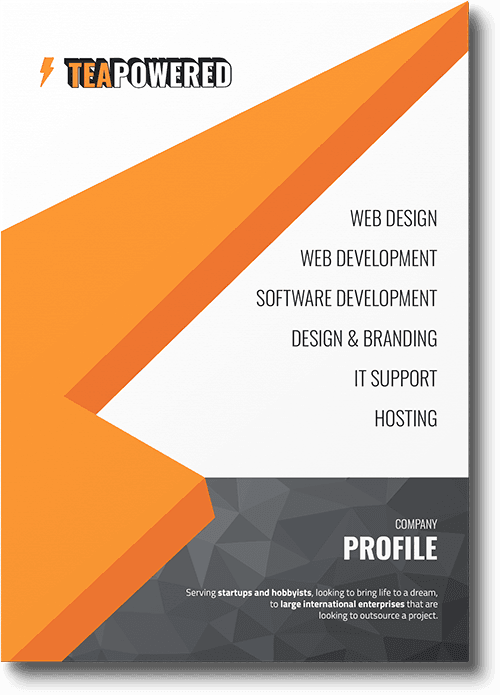Introduction to HTML Header & Title Tags
HTML tags are the building blocks of web development, playing a crucial role in structuring and presenting content on the web. Among these, header and title tags are pivotal in SEO...
In the intricate tapestry of web development, HTML tags are the warp and weft that hold the fabric together. Among these, header and title tags emerge as pivotal players in the realm of SEO and user experience. These tags, often overlooked, are not just mere code snippets; they are the guiding stars for both search engines and visitors navigating the vastness of the internet.
Why are header and title tags so important, you ask? Let's dive into their world to understand their indispensable role in shaping a website's online presence.
Breaking Down the Header Tag: Structure & Significance

In the grand theatre of web content, header tags (ranging from H1 to H6) play a starring role. Far from being mere formatting tools, these tags are integral to the narrative structure of a webpage, offering both users and search engines a roadmap to the content's core essence.
But what makes these header tags so crucial for a website's success? The answer lies in their dual ability to enhance user experience and optimize for search engines – a harmonious blend of art and science.
Hierarchy of Importance
The hierarchy of header tags mirrors the organization of ideas in a well-written essay. The H1 tag, the most significant, is akin to a book's title. It's the first thing users and search engines encounter, setting the stage for what's to follow. Ideally, a webpage should have only one H1 tag, making it clear what the primary focus of the page is.
Subsequent headers, H2 to H6, act as subheadings, breaking the content into digestible sections. Each level down the hierarchy (H2, H3, etc.) addresses subtopics or details, making the content easier to navigate and understand. This logical structure is not just for human readers; search engines use it to decipher and index the hierarchy and relevance of information on a page.
SEO Implications
From an SEO perspective, header tags are a goldmine. They provide a context for search engines, helping them grasp the main themes and subtopics of your content. By including relevant keywords in these headers, especially in the H1 and H2 tags, you're effectively signalling to search engines what your content is about, which can improve your rankings for those terms.
However, keyword stuffing, an old-school SEO tactic, is a big no-no. Modern search algorithms are sophisticated enough to penalize sites that overuse keywords. The key is natural integration of keywords that align with the content's context and add value to the reader.
Enhancing User Experience
Beyond SEO, header tags significantly impact user experience. In an age where the average internet user skims through content, headers act as anchor points that guide readers through the text. A well-structured page with clear headers is more likely to retain users, reducing bounce rates and potentially increasing conversions.
Aesthetically, header tags also contribute to the visual appeal of a webpage. They break the monotony of text, making the content more approachable and readable. When readers can easily find what they're looking for, they're more likely to engage with the content and, by extension, the website.
Header Tags Best Practices
Implementing header tags effectively requires a blend of SEO knowledge and user-centric writing. Some best practices include:
Ensuring the H1 tag is descriptive and reflective of the page content.
Using headers sequentially (H1, then H2, etc.) to maintain logical content flow.
Integrating relevant keywords naturally and sparingly.
Keeping headers concise and to the point.
Utilizing headers to structure content in a way that enhances readability.
In conclusion, header tags are more than just HTML elements; they are the scaffolding upon which effective SEO and user-friendly content are built. By understanding their structure and significance, webmasters and content creators can craft webpages that not only rank well in search engines but also provide a superior user experience.
Title Tags: The First SEO Impression

Now, let's talk about the title tag. If the header tag is the heart of on-page content, the title tag is the soul of your webpage's SEO. It's the first thing that catches a user's eye in search engine results – a critical factor in their decision to click.
In the vast digital landscape where countless websites vie for attention, the title tag is your first and perhaps most crucial point of engagement with your audience and search engines. Think of the title tag as the headline of your virtual billboard. It's what users see first in search results, and it plays a pivotal role in their decision to click through to your website.
Title tags hold immense power in influencing search rankings. A compelling title tag, infused with relevant keywords and a dash of creativity, can work wonders in attracting organic traffic. It's like the cover of a book, enticing readers to look inside.
The Vital First Impression
The importance of first impressions cannot be overstated, and in the digital world, the title tag is often the very first impression your site makes. A well-crafted title tag should be an enticing synopsis of your page's content, capturing the essence of what users can expect to find. It's a balancing act between being informative, engaging, and SEO-friendly.
SEO Powerhouse
From an SEO standpoint, the title tag holds considerable weight. Search engines like Google use title tags as a primary factor in understanding the content and context of a webpage. This makes them critical for search engine rankings. Integrating relevant keywords into your title tags, therefore, is a foundational SEO strategy.
However, it's essential to remember that stuffing your title tag with keywords can do more harm than good. Modern search algorithms are adept at identifying and penalizing such practices. The key is to use keywords naturally and in a way that enhances the readability and appeal of the title.
Crafting the Perfect Title Tag
So, what makes a title tag effective? It should be concise yet descriptive, clear yet intriguing. Ideally, a title tag should:
Be limited to 50-60 characters to ensure it displays fully in search results.
Include your primary keyword near the beginning, as it's more likely to catch the user's attention and be valued by search engines.
Reflect the content of the page accurately. Misleading titles can increase bounce rates and harm your site's credibility.
Be unique for each page on your site to avoid confusing search engines and users.
Engaging and Informative
A title tag should not only be optimized for search engines but also for human readers. It should compel users to click on your link. This requires a touch of creativity. Pose a question, offer a solution, or use compelling language that speaks directly to the user's needs or curiosities.
Avoiding Common Pitfalls
Common mistakes in title tag creation include overlooking branding, being too vague, or creating one-size-fits-all titles. Incorporating your brand name, especially for well-known brands, can boost click-through rates. Each title should be tailored to the specific content of its page, rather than using a generic template across your site.
Your SEO Starting Line
In essence, title tags are where your SEO journey begins. They are not just technical HTML elements; they are the first handshake with your audience, an invitation into your digital domain. Crafting them with care and strategic insight can set the stage for successful user engagement and improved search engine rankings.
Integrating Header and Title Tags: A Strategic Approach

The symphony of SEO becomes melodious when header and title tags harmonise. Using these tags strategically can amplify your website's visibility and user engagement. Imagine header tags as signposts guiding visitors through your content, while title tags act as the beacon, drawing them in from the search results.
Incorporating keywords in both header and title tags, while ensuring they resonate with your content's theme, can elevate your website's search engine ranking. It's a delicate balance of science and art, requiring precision and creativity.
When it comes to maximising the SEO potential of your website, the integration of header and title tags is akin to a strategic symphony, where each element plays a crucial role in harmony. This integration is not just about using keywords; it's about creating a cohesive narrative that resonates with both search engines and users.
Crafting a Cohesive Narrative
The art of integrating header and title tags lies in crafting a narrative that seamlessly weaves together the main theme of your webpage. Your title tag sets the stage, offering a snapshot of what the page is about, while your header tags (H1, H2, etc.) build upon this foundation, guiding the reader through the content. This narrative approach helps in establishing a clear, logical content structure, which is beneficial for both SEO and user experience.
Alignment Between Title and Headers
The alignment between the title and header tags is crucial. The title tag should encapsulate the essence of your content, and your H1 tag should closely mirror this. This alignment reassures users that they’ve landed on the right page and provides clarity to search engines about your content's focus. Subsequent headers (H2, H3, etc.) should then break down the topic further, delving into subtopics or specific aspects mentioned in the title.
Keyword Strategy
Incorporating keywords into both your title and headers is a fundamental SEO tactic. However, it’s important to do this strategically. Your primary keyword should ideally be part of your title tag and your H1 tag. Secondary keywords can be integrated into your H2s and H3s. This not only helps in ranking for those keywords but also maintains a logical flow in your content.
Consistency is Key
Consistency across your title and header tags is essential for reinforcing your topic to search engines. If your title tag promises an exploration of a particular subject, your headers should deliver on that promise. This consistency aids search engines in understanding the relevance and depth of your content, potentially improving your page’s ranking.
Balancing SEO and Readability
While SEO is important, readability should never be compromised. Headers should be engaging and relevant, enticing readers to continue exploring the content. They should not be seen merely as SEO tools, but as integral elements of your content that enhance the reader's journey through your webpage.
Avoiding Over-Optimisation
One common mistake is over-optimising headers and titles with excessive keyword usage. This can lead to a negative user experience and potentially harm your SEO efforts. The focus should be on natural integration of keywords that enhances the content's value and readability.
A Symphony of Elements
In conclusion, the strategic integration of header and title tags is a delicate balance of SEO tactics and storytelling. By aligning these elements cohesively, you not only improve your website’s search engine visibility but also enhance the user experience. This integration is not just about ranking higher; it's about creating content that is genuinely useful and engaging for your audience.
Common Mistakes and How to Avoid Them

Even the most experienced webmasters can slip up when it comes to optimizing header and title tags. Common errors include overstuffing keywords, neglecting the hierarchy of header tags, or creating vague title tags. These mistakes can muddle your website's SEO and user experience.
To avoid these pitfalls, focus on creating clear, concise, and contextually relevant tags. Remember, your goal is to aid understanding, not to confuse or mislead your audience or search engines.
Overstuffing Keywords
One of the most prevalent mistakes is the overstuffing of keywords. While it’s important to include relevant keywords in your headers and title tags, cramming too many can lead to what’s known as ‘keyword stuffing’. This practice not only disrupts the flow and readability of your content but also raises red flags for search engines, which may view it as an attempt to manipulate rankings.
How to Avoid: Focus on using keywords naturally and contextually. Your priority should be on creating content that is informative and engaging for users, with keywords integrated seamlessly.
Ignoring Tag Hierarchy
Another common error is not respecting the hierarchy of header tags. The H1 tag is your primary header and should be used as the main title of your page. Following this, H2, H3, and subsequent tags should be used in a descending order to structure your content logically.
How to Avoid: Always start with an H1 tag and proceed to use H2 and H3 tags for subheadings. This helps in maintaining a clear and organized structure, making it easier for both users and search engines to follow.
Neglecting Title Tag Optimization
The title tag is often underestimated and, as a result, not optimized effectively. A poorly crafted title tag can lead to lower click-through rates and affect your page’s ability to rank in search results.
How to Avoid: Ensure your title tag is concise (50-60 characters), includes primary keywords, and accurately reflects the content of the page. It should be compelling enough to encourage users to click through.
Inconsistency in Content and Tags
Inconsistency between the content of the page and the information in the header and title tags can confuse users and search engines. If your tags promise one thing but your content delivers something else, it can lead to high bounce rates and decreased trustworthiness.
How to Avoid: Your header and title tags should accurately represent the content of your page. They should set the right expectations for what users will find when they click through.
Duplicate Tags Across Pages
Using the same or very similar title and header tags across multiple pages is a mistake that can dilute your SEO efforts. It can create confusion for search engines trying to determine which page is most relevant for a given search query.
How to Avoid: Create unique and specific title and header tags for each page. This not only helps search engines understand the distinctiveness of each page but also improves the user experience.
Neglecting Mobile Optimization
With the increasing use of mobile devices for web browsing, ignoring mobile optimization in your header and title tag strategy can be detrimental. Tags that are too lengthy or poorly formatted may not display correctly on smaller screens.
How to Avoid: Test how your title and header tags appear on different devices. Ensure they are concise and adaptable to various screen sizes for optimal user experience.
Navigating Towards Success
By being mindful of these common mistakes and implementing strategies to avoid them, you can significantly improve the effectiveness of your header and title tags. Remember, the goal is to create a seamless, user-friendly, and search engine-optimized experience that accurately reflects the content of your page.
Conclusion: Maximising SEO with Effective Header & Title Tag Usage
In conclusion, mastering the art of header and title tag optimization is crucial for any website aspiring to climb the SEO ladder. These tags are not just code elements; they are the storytellers of your website, narrating its content to both users and search engines.
By understanding and implementing the strategies discussed, you can transform your website into an SEO powerhouse. And as you do, remember: in the digital realm, the power of words is unmatched, especially when they are strategically placed within the right tags.
